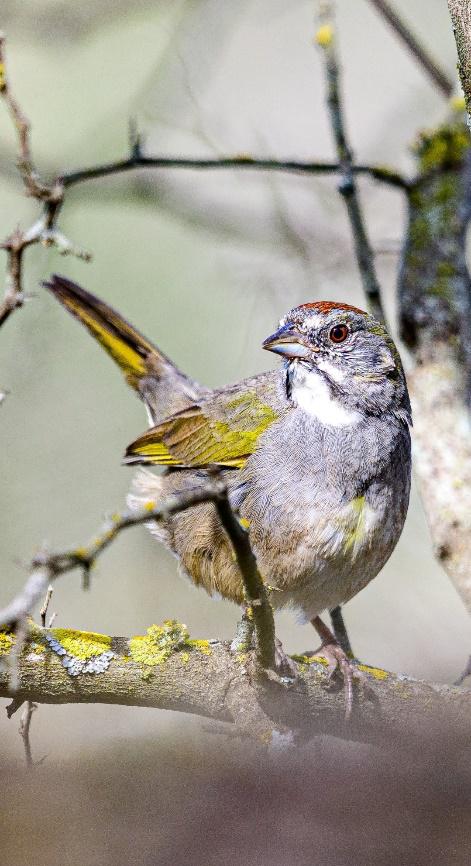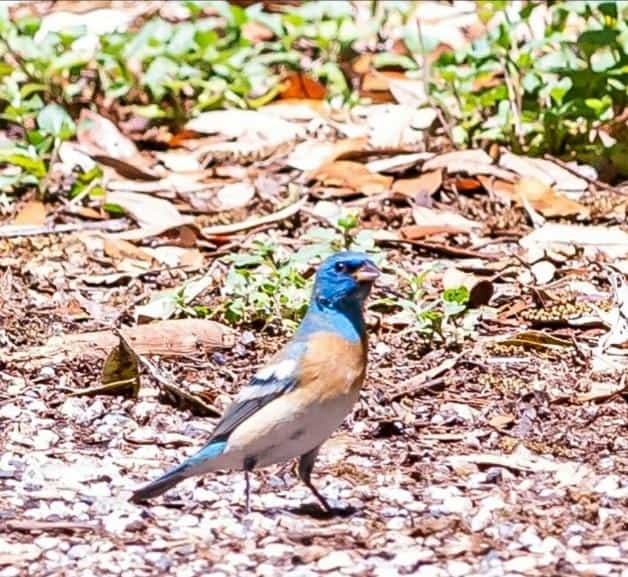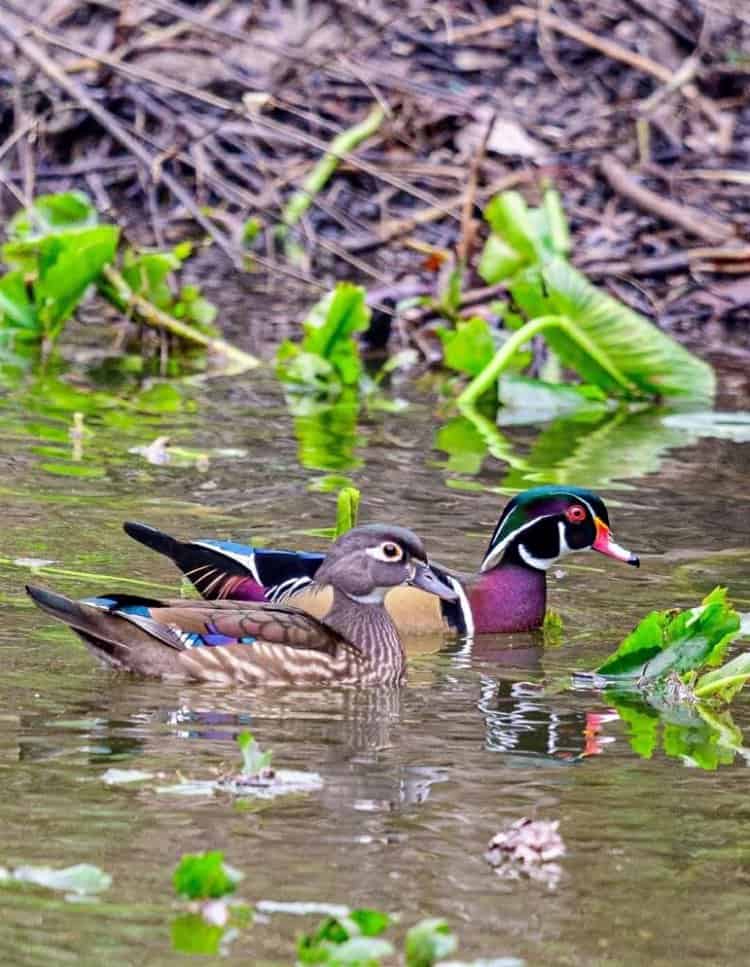Songbirds, those cute little birds- that are sometimes so small you might not see them hidden in the vegetation are commonly found along Avenue A and River Road along the San Antonio River located in Brackenridge Park next to a quaint little neighborhood of Historic homes.


Passerines: Songbirds represent a group of birds known for their singing abilities. Common families of songbirds include finches, tanagers, thrushes, sparrows and wrens. Songbirds are perching birds, an order called passerines that share a distinct toe arrangement that helps them grasp branches. Birds in the Passeri are called oscines, or songbirds.
Songbirds can sing because of a special organ called a syrinx. There are several reasons why they sing- from wooing a potential mate, to calling out alarms for danger, and for territory.
Birdsong: Mark Constantine, author of the Sound Approach to Birding and founder of the Sound Approach Database, said: Birdsong is used as an indicator of quality of life and has been proved to reduce our blood pressure. When we live in the center of large, urban areas, we get more stressed and its extremely good to have birdsong around us. The impact on humas of birdsong is massive. It harms us as well as the birds, their songs become simpler, shriller and louder.”
Learn about Bird Sound: The Sound Approach to Birding

I usually miss the tiny little birds, but there are avid “Birders” and Photographers like Dwayne Flores of San Antonio who sees them all! Lark Bunting, Painted Bunting, Golden Crowned Kinglet, Orioles, Flycatcher, American Robin, Blue Jay, and countless Warblers that stop over during migration.


Dwayne has photographed Barred Owls with their owlets and Crested Caracara that nested along Avenue A, along with a number of migratory waterfowl – Wood ducks, Lesser Scaup, and Ring-Necked Ducks. Migrating Kingfishers, and so much more



Dwayne has also spotted “Rare” birds that brought other “Birders” running from out of town to catch a glimpse of the bird along Avenue A -such as a Flame colored Tanager and Greater Peewee. A whopping 22 species of Warblers were identified in one morning.
“Rare” Birds out of their normal range identified by local Birders include a Great Kiskadee, Lazuli Bunting, Brown Thrasher, Green-tailed Towhee, Eastern Towhee, Tufted Titmouse, Buff-bellied Hummingbird all found along the first stretch of woods north of the city’s densely paved downtown.
River Road Resident, Myfe Moore, says the project will take away her favorite turnaround road and disturb the wildlife, especially the birds with heavy equipment tearing up asphalt and vegetation!



Upstream from this crossing, is said to be where the Payaya Indians first met the Spaniards at the “1st People’s Paseo de Tejas” ford crossing. An important historically significant element mentioned in the National Register of Historic Places nomination for Brackenridge Park.
The park is full of historic and prehistoric cultural resources according to one survey completed by The Center for Archeological Research (CAR) University of Texas at San Antonio (UTSA).


Warbler 101 – Online Blog-Bird Buddy Tales article, “Everything you need to know-What are Warblers” reports that, “Warblers are one of the largest groups of perching songbirds in the world. “On the whole the majority of warbler species are in decline due to habitat loss most of all.”
Learn More here: https://blog.mybirdbudy.com/post/warblers-101
Sadly, it will not only be the songbirds that face the loss of a critical habitat, but it will also be everything “wild” that relies on the riparian habitat for food, shelter and breeding.
The Professor: According to Richard Reed, PHD. Professor of Sociology and Anthropology, “the USACE-U.S. Army Corps of Engineers project will impact the ecosystem by reducing biodiversity. Biodiversity is one of the elements that maintains stability, allows animals and aquatic life to survive. Reed states, “the removal of such a large amount of vegetation in a single season-removing almost all of the tree canopy and understory vegetation that provides shelter and also provides a food source for migratory bird species will greatly impact the birds.”
Biodiversity: Biodiversity is all the different kinds of life you can find in one area-the variety of animals, plants, fungi and even microorganisms like bacteria that make up our natural world.
Professor Reed goes on to say that some “invasive” plant species are a food source for some migratory bird such as the Ligustrum trees which Cedar Waxwings are known to feed on.


The US National Park Service reports that Riparian zones, or areas, are lands that occur along the edges of rivers, streams lakes, and other water bodies. NPS-Riparian Zones-It’s all about the Water.
Wetlands: “Wetlands are among the most productive ecosystems in the world, and home to many specially adapted plant and wildlife species. Wetlands provide many important benefits to people, fish and wildlife.” Information courtesy of Texas Aquatic Science partners: Texas Parks and Wildlife, The Meadows Center for Water and the Environment, and the Harte Research Institute for Gulf of Mexico Studies
According to the US Geological Survey Wetlands mapper, part of this stretch of the river is identified as “PUBHh-a 1.00-acre Freshwater Pond habitat-classified as a PUBHh. System Palustrine (P):
System Palustrine (P): The Palustrine System includes all nontidal wetlands dominated by trees, shrubs, persistent emergents, emergent mosses or lichens, and all such wetlands that occur in tidal areas.”
Wetlands Mapper | U.S. Fish & Wildlife Service (fws.gov)
“Flood control is among the most important benefits provided by wetlands. By conserving wetlands, properties, and people living downstream are protected from flooding.” Credit: Ducks unlimited Canada
Avenue and River Road are located in the 100-year floodplain. A floodplain is any land area susceptible to being inundated by flood waters from any sources.
Floodplain | Bexar County, TX – Official Website
The 100-year floodplain: Land that is predicted to flood during a 100-year storm, which has a 1% chance of occurring in any given year. Areas within the 100-year floodplain may flood in much smaller storms as well.

The Project: River Road Aquatic Ecosystem Restoration report by the US Army Corps of Engineers study description found here:
https://www.swf.usace.armu.mil/Missions/Civil-Works/Continuing-Authorities-Program/River-Road/
USACE Problem Statement: “The aquatic ecosystem along the river road segment of the San Antonio River is severely degraded from excess erosion resulting in a riparian corridor that has been reduced to a narrow strip adjacent to the riverbank. This has reduced the natural bank erosion protection provided by the riparian vegetation along the river.”
“The riparian corridor is further degraded by public disturbance, including parking vehicles in the already reduced riparian area that parallels the river,” according to the USACE Integrated Feasibility Report and Environmental Assessment. You can find details on Page 7.
This article shows the study area for the River Road Project according to Clayton Church, Public Affairs Specialist, USACE.
The Planning Objectives according to USACE, “planning objectives reflect an expression of public and professional issues and concerns about the use of water and related land resources resulting from the analysis of existing and future conditions in the study area.” Section 206 Project, which consists of the river Road restoration of the Riparian habitat in Davis Park; complete removal of Avenue A; Removal of low water crossings (LWC) 1,2 and 3 and replace with three pedestrian bridges; and the design and addition of recreational features. Recreational features will include an asphalt access path, fishing piers/bird watching platforms and signage.




Brian Mast of the San Antonio River Authority (SARA) was sent a short list of questions regarding the project and provided the following responses:
Question: How is removing such a large amount of vegetation restoring the ecosystem?
SARA Response: “The project is to restore the aquatic and riparian ecosystem in the area. The primary goals are to improve fish passage, mitigate erosion, remove non-native and invasive species and replant native aquatic plants, grasses, wildflowers, shrubs and trees. The native species will improve habitat quality in the area.”
Question: How is adding walkways into a riparian ecosystem restoration?
SARA Response: “Avenue A will be converted to a hike and bike trail. This will likely reduce the footprint of pavement currently in the area.”
An “invasive species” is defined as a species that is Non-native (or alien) to the ecosystem under consideration. Some Invasive plants are a foraging resource for insectivorous birds.
River Road resident Terri Gorler, considers this stretch of the river to be, “the last beautiful—natural area along the San Antonio River. The work suggested by the USACE will devastate this part of the river and cause environmental harm. Taking away the green space that helps cool the neighborhood during the summer, the vegetation that mitigates flooding and provides a buffer zone to the ever-increasing level of urban noise pollution. The thought of flooding along the hundred-year floodplain is frightening considering she has suffered through two major floods to date! She opposes the project!


Human activity is destroying the natural world at an alarming rate:
LPR20_Full_report.pdf (wwf.org.uk)
Climate change and the destruction of habitat as land is developed is impacting migratory birds.
With habitat loss, wildlife is displaced and forced to live in small areas of “wilderness” that can only sustain a limited number of species. Some species will try to adapt but will ultimately suffer population loss in the process.
“ABC’s experts know that habitats managed for birds can support the birds and other wildlife that depend on them, providing sources of food, refuge, and places to nest and raise their young. With human-caused threats minimized, bird populations can stabilize and rebound — over time, reversing bird population trends from declining to thriving.”
Habitat is Hope – American Bird Conservancy (abcbirds.org)
What you can do
Help to save wildlife by donating as little as $1 – It only takes a minute.
Alesia Garlock
Wildlife / Environmental Advocate! I fight to protect nature. Informing the public of hidden agenda!






Leave a Reply